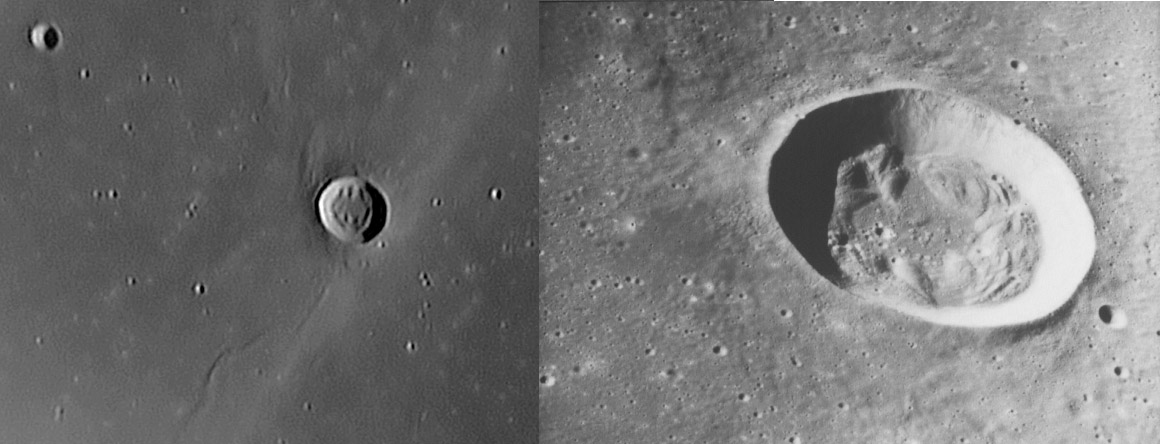
left image by Zac Pujic, right image is Apollo 15-9328.
Simple craters are little hemispherical bowls. Complex craters with diameters of 20-25 km and larger have flat floors, central peaks and slumps or terraces on their walls. In between is a transition zone where the energy of impact isn’t quite high enough for rebound to make significant peaks, and the first wall failure occurs. Sixteen-kilometer wide Bessel is an example of such a crater. As seen in Zac’s image the crater has a perfect wall, looking like it was turned on a lathe, with a ring of wall debris hugging the edge of the floor. Two linear ridges jut from both the north and south walls. Seen from the window of Apollo 15 more details are visible that really only confirm the good Earth view. The wall debris is made up of curved mounds of crushed rock that had slid down the steep slopes. Bessel is only 1.8 km deep, whereas the classic simple crater Hortensius is 15 km wide and 2.9 km deep. From this we can conclude that the debris visible on the edges of Bessel’s floor are really just the top of a kilometer thickness of fill. Bessel is old enough that only a few of its secondaries that must have formed are visible. But radar shows that Bessel, like Petavius, has a radar dark halo that implies that the surrounding surface is smooth and free of blocky ejecta. Hmm…
Technical Details:
July 25, 2005. 32 cm Newtonian at f/28 + Wratten 25 filter + Phillips ToUcam Pro webcam. Frames from 3 minute avi stacked with Registax. South up in both images - necessary because of the look angle of the Apollo photo.
Related Links:
Rükl plate 34
Zac’s website
Yesterday's LPOD: LPOD is Back, Again!
Tomorrow's LPOD: Plato Near the Limb
COMMENTS?
Register, Log in, and join in the comments.



